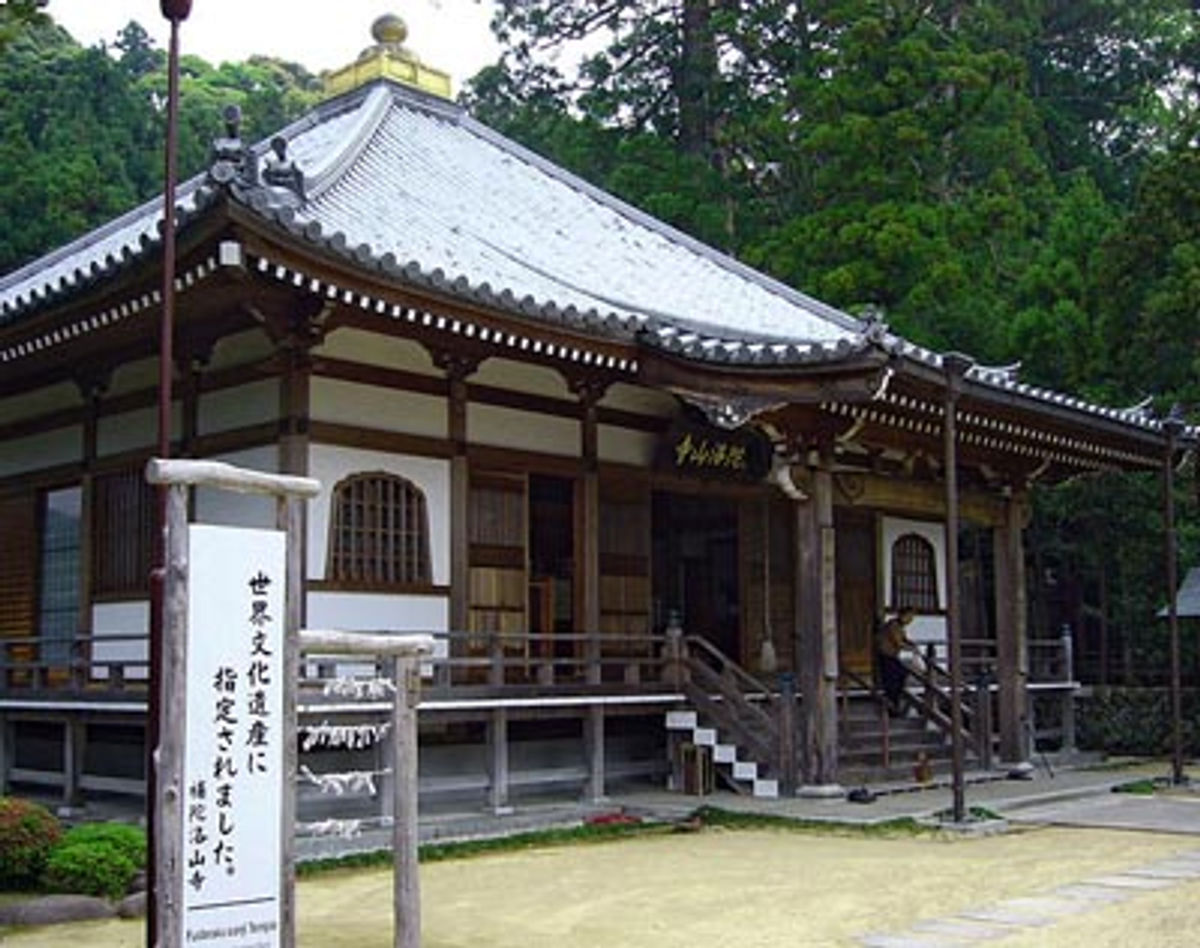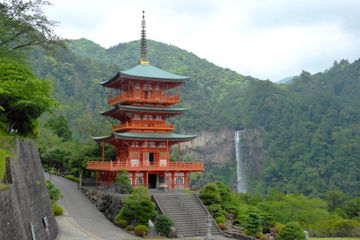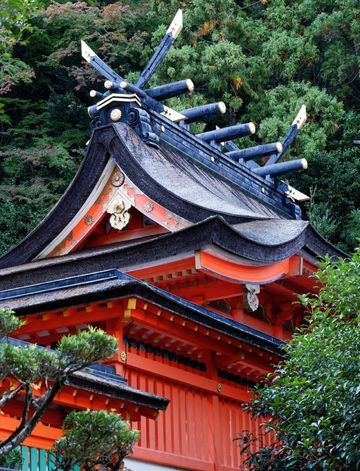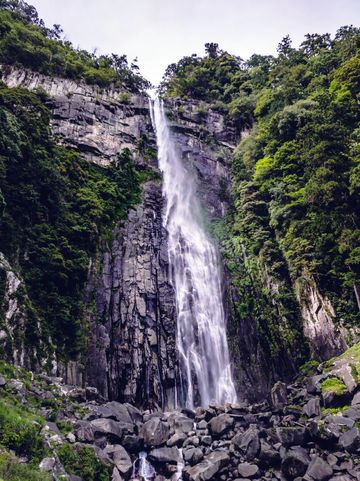
Many thanks to author and friend Cate Kodo Juno. Cate is a Buddhist priest ordained in the Shingon Buddhist tradition of Japan. She is also a "sendatsu" (先達), or official pilgrimage guide, of the Saigoku 33 Kannon Pilgrimage.
For over a thousand years, up until the late 19th century, many of the abbots of this temple set out to sea on a small rudderless boat when they turned 60 years old. This practice was called "Fudaraku Tōkai," and is one of the "Shashin Gyo" trainings in which priests performed an act of self-sacrifice for the purpose of human salvation.

People entrusted the priests to carry their prayers for happiness and enlightenment to Fudaraku (Potala in Sanskrit) Island, Kannon’s Paradise, which was said to lie somewhere off the southern coast. There is a replica of the boat housed in a special pavilion at the temple which shows the boat to have been built as a sailing shrine, surrounded by red shrine fences and a torii gate like you can see at any shrine. The priests were given token provisions and pushed out to sea from the shoreline that is about hundred meters directly in front of the temple. The temple's name Seiganto-ji translates as "Mt. Potala," or Kannon’s Paradise.
Fudurakusan-ji was recognized as a UNESCO World Heritage Site under the "Sacred Sites and Pilgrimage Routes in the Kii Mountain Range" designation.



